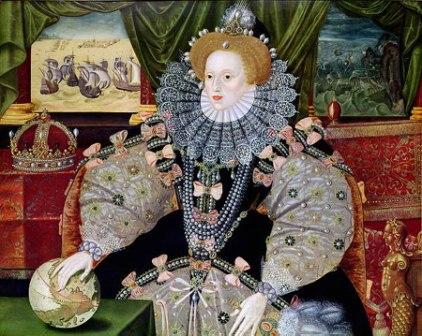 |
| Photo © A.Jensen/BeingBess. |
While traditionally we think of children using coloring books, everybody loves to color, and "adult coloring books" are an exciting new trend. There aren't many historically themed coloring books out there that I know of, but that is changing, thanks to Colouring History - The Tudors. Text is by Natalie Grueninger, author and blogger of On The Tudor Trail, and the illustrations are by Kathryn Holman. I was lucky enough to receive a review copy from Trafalgar Press, and I got to coloring right away!
As I flipped through the pages of the book, trying to decide which picture I would color first, I became really impressed with the variety of the coloring pages. Some pages were renderings of actual famous Tudor portraits, some well known and some not-so-well known. Other pages were original designs inspired by history. There is something for everyone in this book, whether you like to color traditional pictures, or prefer abstract or geometric designs. And, each page is accompanied by information about the picture, so you can learn while you color!
 |
| Heraldic badges of King Henry VIII's third, fourth, fifth and sixth wives. Photo © A.Jensen/BeingBess. |
I chose a picture of a Tudor village to start, and it was so wonderfully detailed that it kept me busy for two days! I was really pleased with the quality of the picture when I finished, which is a testament to the coloring page, not my minimal abilities as an artist!
 |
| The finished product! Photo © A.Jensen/BeingBess. |
While I will be primarily using this coloring book for myself, it occured to me that many of these pages would photocopy well, and could be used in a classroom or in a program for an activity. I intend to make photocopies of my favorite Tudor themed pages and save them for the next time I do a BeingBess event.
 |
| A rendering of Gower's Armada Portrait of Queen Elizabeth I. Photo © A.Jensen/BeingBess. |
I recommend buying this book if you like Tudor history and art, or are looking for stress relief (coloring is excellent for stress relief!) It can be used by adults or children, and would make a superb holiday or birthday gift for the Tudor-phile in your life!
Share photos of your pictures on Instagram with the hashtag #ColouringHistory / #ColoringHistory






